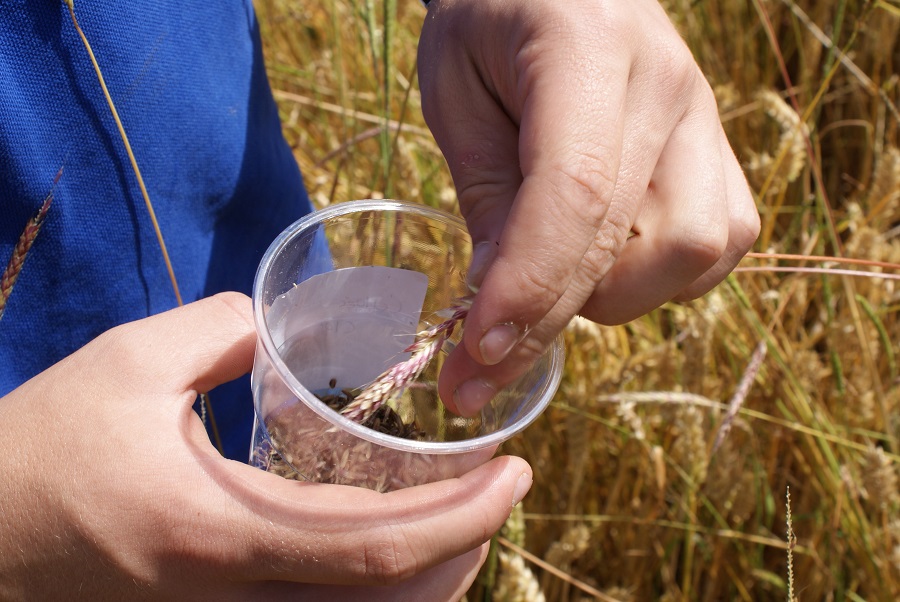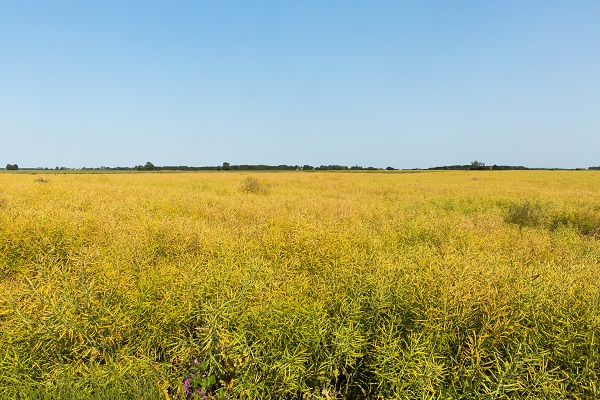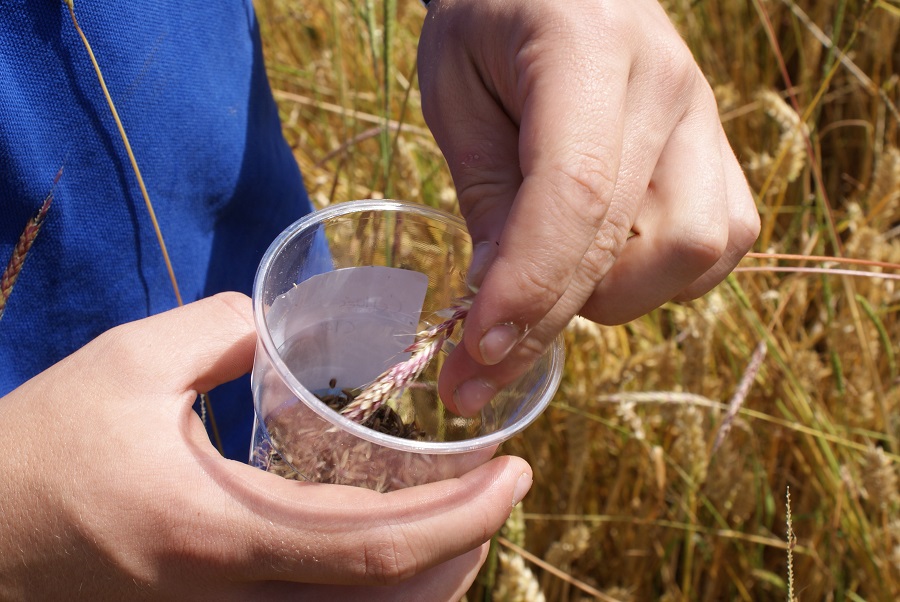
Whether it’s to gauge for herbicide resistance or crop nutrition, now’s the time to gather seeds for testing. CPM reports.
The first step in grassweed control is to know what you’re dealing with.
By Tom Allen-Stevens and Rob Jones
As harvest gets underway – somewhat earlier than usual for many – growers have been encouraged to assess blackgrass for resistance and start autumn fieldwork, even before the combine header is lowered into the crop.
Herbicide resistance in blackgrass continues its relentless rise, and according to the Blackgrass Resistance Initiative (BGRI) now costs UK growers £400M/yr in lost gross profit and 0.8M tonnes of lost wheat yield.
“Every time you use a herbicide you select for resistance,” notes Dr Sarah Cook of ADAS. “Unless you have a zero-tolerance policy, you will be driving up levels of resistance. Coupled with the demise of oilseed rape, meaning a reduction in the break-crop area, this is not a good picture.”

Hold off on spraying until two thirds of seeds in the part of the canopy carrying the lion’s share of the yield change from green to brown.
©Tim Scrivener Photographer 07850 303986
….Covering Agriculture In The UK.
She urges growers not to “go into denial” over the grassweed, but to get seed tested for resistance. “The first step in grassweed control is to know what you’re dealing with,” she says.
ADAS has revamped its resistance testing this year – as well as offering standard tests for blackgrass, Italian ryegrass and wild oats, there’s a new standard test for brome, which is free in 2020 as part of an AHDB project. For all species you can also select your own choice of herbicides for a bespoke test.
Independent consultant Dr Stephen Moss suggests OSR growers may wish to test blackgrass seed for clethodim resistance. Recent petri-dish trials he’s undertaken have concluded it’s much less affected by resistance than cycloxydim, the standard ‘dim’ herbicide used in tests.
“Clethodim is a relatively new herbicide in the UK and offers opportunities for OSR growers with resistant blackgrass to reduce reliance on propyzamide and carbetamide. This can be particularly useful in water catchments where these residual herbicides are found in ground and surface water.” The full results of Stephen’s trials, which include field studies, funded by Affinity Water, will be published in CPM later this year.
This year, early July is when blackgrass is likely to be at peak shedding in cereal crops sown last autumn but shedding will be later in spring-sown crops. Sarah notes that samples should not be taken too early, should be dried and stored in a paper envelope before posting. (further details at www.adas.uk/herbicideresistance).
Research has shown that on-farm levels of blackgrass resistance cannot be reversed but it can be slowed down, according to BASF’s Stuart Kevis. To determine the shift in resistance, BASF tested blackgrass populations on 122 farms in 2013 and again in 2019 to determine how they’ve changed.
“Over this relatively short timeframe total resistance to the main three mechanisms has increased by 12%, from 46% to 58%. But the largest single shift was to ALS-inhibitor herbicides, such as mesosulfuron, where RRR resistance grewfrom 35% to 78%. Overall, 89% of the total population tested showed resistance to ALS,” he reports.
“This constitutes a huge loss in levels of control, leaving only around 10% of populations susceptible to these types of contact herbicides, something that has been noted in-field by farmers and agronomists over the past few years,” notes Stuart.
BASF has been running a season of Real Results Virtual Farm Tours this summer, bringing together growers, advisors and researchers to talk about how control mechanisms are changing and to get individual tips on how best to tackle rising resistance.
The events also give farmers and advisors the opportunity to apply for one of 200 free blackgrass resistance tests in return for sharing their best practice tips for blackgrass control. CPD points are on offer at the events, along with the opportunity to link live to blackgrass experts (www.basfrealresultsfarm.com)
Starting your autumn fieldwork well ahead of combining will avoid this season’s cropping challenges getting in the way of the cleanest, best and most-timely establishment of your next crop, advises Bayer weed control specialist, Thomas Scanlon.
“Combining can be considered the first cultivation for the most effective straw and chaff incorporation ahead of seedbed preparation,” he points out.
Thomas sees the right pre-harvest spray programme as the key essential element here, and it starts up to three weeks before combining. Getting the glyphosate timing correct will be especially challenging in OSR crops that have compensated for damage from flea beetle larvae, he warns. Late branching and an extended flowering result in a wide spread of pod maturity throughout the canopy.
But Thomas advises to hold off on spraying until two thirds of seeds in the part of the canopy carrying the lion’s share of the yield change from green to brown. “There’s no advantage in spraying glyphosate before rapeseed moisture levels drop below 30%. Rather than bringing combining forward it just means crops take longer to dry down,” he adds.
“The same 30% moisture level applies to pre-harvest spraying in cereals. This is reached when all the grains from the centre of the ear hold an indentation from a firm thumbnail press.”
Glyphosate formulation is also important, he stresses. “The biggest challenge with glyphosate is getting it into the plant. Modern Roundups, such as Powermax and Flex, can deal with heavily waxed cuticles, are reliable under challenging conditions, and have better rainfastness.”
Growers get ready for the Luximo lure
BASF has revealed more details about its new blackgrass herbicide, Luximo, due to launch in 2021, subject to regulatory approval. It’s based on cinmethylin, a molecule discovered by Shell in the early 1980s, but “put to bed”, says Stuart Kevis.
“Everyone was thinking that crops were going GM herbicide-tolerant and a soil residual active wouldn’t be needed anymore,” he says.
Its mode of action is inhibition of the fatty acid thioesterase, used by seedlings as they develop. The first new mode of action for cereal herbicides in 20 years, it’s also in a brand new HRAC classification.
Best used pre-emergence of blackgrass, Luximo will be available with mix partners and should be used as part of an integrated weed management strategy, working alongside tried and tested cultural controls, says BASF’s Ali Richards.
“As excited as we are about what this new chemistry can achieve, Luximo should not be looked upon as a ‘silver bullet’. Its role should be as a building block that we protect for many future years,” she says.
‘Child of YEN’ goes with the grain of crop nutrition
ADAS has launched a new YEN initiative to support growers seeking to improve the nutrition of arable crops. YEN Nutrition provides comprehensive grain analysis on all 12 essential crop nutrients and allows participants to benchmark their crops’ nutritional performance against other growers.
Used in conjunction with soil and leaf analysis, YEN Nutrition reveals the final status of the crop, giving members oversight of their crop’s ultimate nutritional achievements, and empowering them to make the right choices to enhance their future crop yields, field by field, says Prof Roger Sylvester-Bradley of ADAS.
“We recognise getting nutrition right is a challenge, even for the best growers,” he says. “But we believe that, with minimal extra effort, farmers can now be much more confident in achieving full crop nutrition by measuring all the nutrients that they harvest, and then sharing their results.”
The service is a world first, says Roger, and builds on ten years of research, initially on phosphorus (P), and more recently on all 12 crop nutrients. Grain testing of over 900 samples from YEN farmers through the last four years revealed that 74% of cereal crops were deficient of at least one nutrient. “This indicates that despite the best efforts of many growers, nutrition was commonly inhibiting the full potential of their crops.”
Grain analysis tells whether a crop actually captured enough of each essential nutrient throughout its entire life, he explains. “It augments soil analysis that can identify availabilities of P, K and Mg, and leaf analysis that can reveal immediate nutrient shortages.”
Members of YEN Nutrition will receive three reports, including benchmarking performance results. This will show how well their crops’ nutrition ranked to help identify where attention to crop nutrition should best be focussed.
The service costs £250 which provides six samples, and Roger advises taking a representative grain sample on intake of each field. Extra fields can be sampled for £40 each. www.yen.adas.co.uk/projects/yen-nutrition




